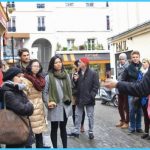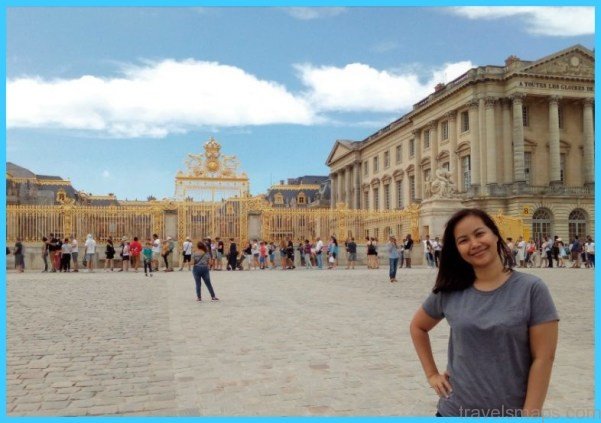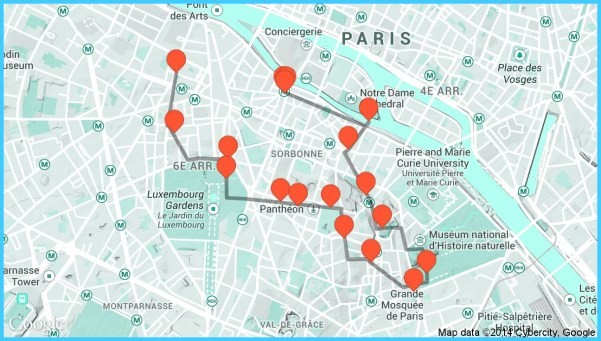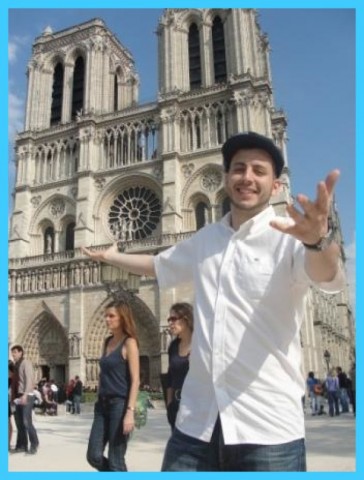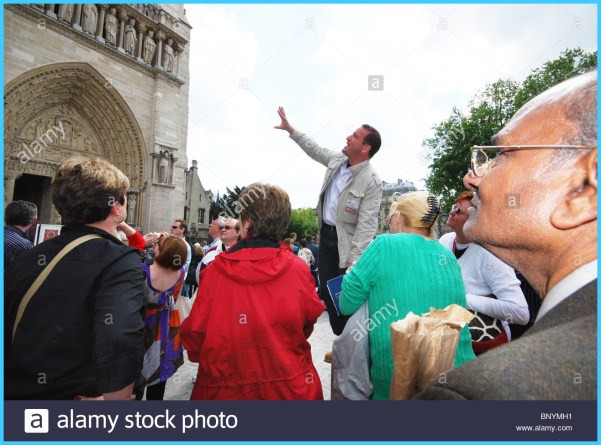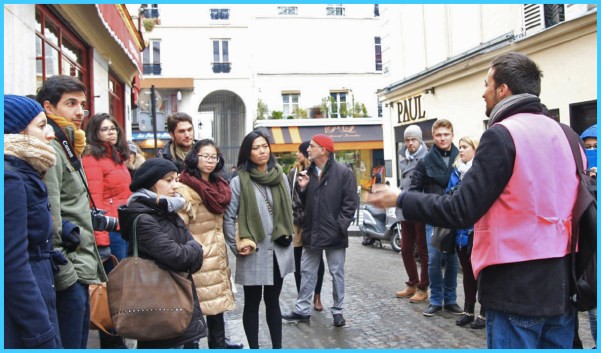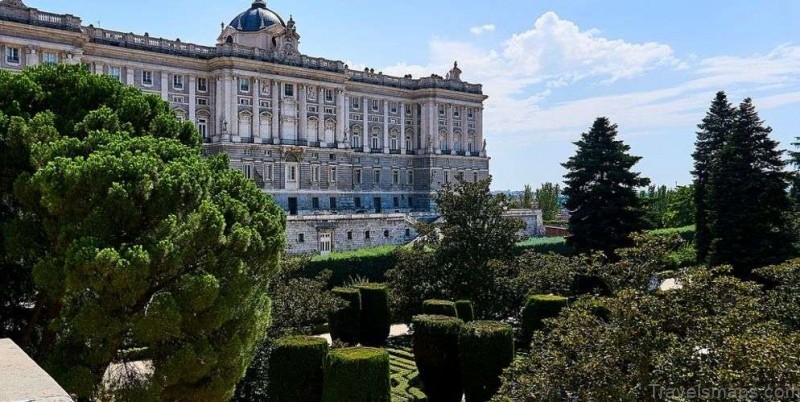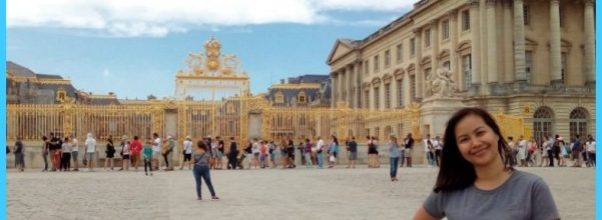
Malmaison
Malmaison is as much of a delightful surprise as Versailles is a bore. It is a small seventeenth-century house, bought by Josephine Beauharnais in 1799, and redecorated immediately afterwards by Perrier and Fontaine. When Josephine was divorced by Napoleon in 1809, she continued to live here and had her private apartments redone in the same style. She died in 1814 after a boat trip with the Tsar of Russia, who was in Paris for the first peace conference; when Napoleon came back in 1815 for his hundred days he revisited Malmaison and came weeping out of Josephine’s bedroom It was from here that he finally left after Waterloo, first for Rochefort and then for St Helena.
Paris Tour Guide Photo Gallery
So the house has outstanding historical interest, of an intimate, comprehensible sort. But there is outstanding decorative interest too. After more than a century of frozen attitudes here is variety and warmth. Moods are something to be encouraged, not straight-jacketed into protocol. Parts of Malmaison are reconstructions or suppositions – always well done – because it went through hard times until it was finally handed over to the State. But two sequences are in effect complete: one of 1800 on the ground floor, the other of 1810 on the first. On the ground floor there is first the diningroom, with a wonderful directness and inventiveness in each article of furniture, even in each plate and saucer. Beyond that is the Council Room, arranged as a military tent, striped concave roof and all: black and white, where the other had been gently pink. And beyond that the library, an embodiment of French maturity: accommodating to a degree which can only come from an extremely strong personality. The English parallel is the Soane Museum (and it seems to have been a genuine parallel, not a case of imitation); but Soane is obsessed with a thorny inner meditation. Perrier and Fontaine are concerned with all humanity; it would be easy for anyone to live here, where it would take a very queer fish to be really happy in the Soane Museum The room is low-vaulted, brown and gold; divided into three by a pair of columned screens shaped like Venetian windows. One is open, the other has its sides filled and faced with mirrors, which actually cover a pair of flues from the kitchens below. Supple, intriguing yet relaxing, a wonderful place for a good read; and hence true functionalism
On the first floor the set-piece is Josephine’s bedroom: oval, hung with red drapery, trimmed with gold. The ceiling has an oval painted with clouds; the sumptuous bed has a superstructure which is oval in the other direction. And here the only English parallel is the interior of the Brighton Pavilion.
Travel To Paris France Marly-le-Pecq: Saint-Thibault
Pierre Jung and Claude Limel, 1964
This is the church for a big new estate between Marly and Saint-Germain. From outside it may look like one more conjuring trick with outre shapes, but the inside is superb. It uses, as many others do, the idea of a tent over the altar formed by warped and curved concrete or wood roofs. In most churches, this seems like an inexplicable funnel diverting attention from the altar. Here, the wooden vault is carried through with wind-tunnel force, swooping down from above the gallery, billowing out into the nave then soaring up right out of sight, out of sight up to the very last few steps in front of the altar. But it is not an imposition: it carries the whole meaning of the church up with it. The shape of the prayer is the shape of the vault.
Travel To Paris Alone Le Vesinet
An astonishing place for Englishmen who like to think of the garden city as their own invention. Le Vesinet is across the Seine from Saint-Germain-en-Laye, towards Paris. It was built between 1856 and the 1880s, before we had ever thought of Bedford Park. And, apart from its attachment to the railway station, it is as much of a new town as Harlow. If Englishmen want to take credit, they had better look back to John Nash, for undoubtedly his ideas were at the back of it.
Start at the station – which, even now, attracts perhaps two hundred cars at the most. North of this is the town centre: a proper town, with none of the this-is-good-for-you attitude of Letchworth and Welwyn. It includes an openwork iron market, U-shaped, whose central arch makes an entrancing incident on one of the axes. It includes also a church, which from the outside is like a thousand others. But inside, this is an iron frame, too, the work of Boileau who built Saint-Eugene in Paris. Here, on a smaller scale, his intention is even clearer: to recreate the single overpowering space of the Sainte-Chapelle in nineteenth-century terms, lightening the supports beyond any medieval resource – not to make the result literally lighter, but to make it more luminous and overpowering. The glass-makers did not keep up with him, and his artistic imagination did not quite keep up with his structural competence: if it had, his would be about the best nineteenth-century church in the world.
North of this is the most obvious repository of atmosphere: big villas, curvy roads, forming a complete wheel-and-spokes, and a lake with an island on it. This, itself, is better than anything else of the kind near Paris. But it is immediately south of the station that the designer showed himself to be Nash’s true heir. Open land, a kind of village green, flows right up to the tracks. The villas appear, unequally, at the edge of this, and fingers of public land twist in and out between them These lead, in the end, to a leafy canal; at last, the landscape has melted, Le Notre’s designing has been shown up as a (sometimes splendid) special case.
Maybe You Like Them Too
- The Best Places To Visit In North America For Christmas
- Faro Travel Guide: Map of Faro
- Mumbai Travel Guide For Tourists: Map Of Mumbai
- Travel to Budapest
- Thailand Travel Guide for Tourists: The Ultimate Thailand Map









